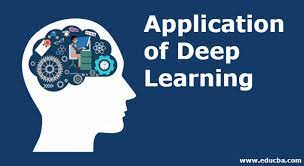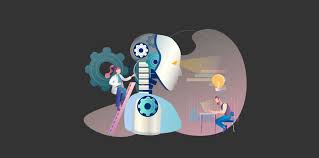In the realm of artificial intelligence, few technologies have garnered as much attention and fascination as deep learning. With its ability to extract intricate patterns from vast datasets, deep learning has revolutionized numerous fields, from computer vision and natural language processing to healthcare and finance. Yet, for many, the inner workings of this powerful technology remain shrouded in mystery.
In this comprehensive guide, we embark on a journey to demystify deep learning, unlocking its secrets and shedding light on its principles, applications, and potential.
Understanding Deep Learning:

At its core, deep learning is a subset of machine learning that utilizes artificial neural networks inspired by the structure and function of the human brain. Unlike traditional machine learning algorithms, which require explicit feature extraction, deep learning algorithms autonomously learn hierarchical representations of data. These representations, encapsulated in layers of interconnected neurons, enable deep neural networks to automatically discover intricate patterns and features within complex datasets.
The Building Blocks of Deep Learning:

Central to the architecture of deep neural networks are layers of interconnected neurons, each performing specific transformations on the input data. These layers can be broadly categorized into three types:
- Input Layer: The initial layer that receives raw data inputs.
- Hidden Layers: Intermediate layers that perform transformations and feature extraction.
- Output Layer: The final layer that produces the model’s predictions or outputs.
Training Deep Neural Networks:

Training a deep neural network involves optimizing its parameters (weights and biases) to minimize the difference between predicted outputs and actual targets. This process, known as backpropagation, utilizes algorithms like gradient descent to adjust the network’s parameters iteratively. Through this iterative optimization process, the network learns to make accurate predictions and generalize to unseen data.
Applications of Deep Learning:

The versatility of deep learning has led to its widespread adoption across various industries and domains:
- Computer Vision: Deep learning powers image recognition, object detection, and image segmentation tasks, enabling applications like autonomous vehicles, medical imaging, and facial recognition.
- Natural Language Processing (NLP): Deep learning models excel at understanding and generating human language, driving advancements in machine translation, sentiment analysis, and chatbots.
- Healthcare: Deep learning aids in disease diagnosis, medical imaging analysis, drug discovery, and personalized treatment recommendations, enhancing patient care and outcomes.
- Finance: Deep learning models analyze financial data for fraud detection, risk assessment, algorithmic trading, and customer behavior prediction, optimizing decision-making processes.
Challenges and Future Directions:

Despite its remarkable successes, deep learning is not without challenges. Issues such as overfitting, interpretability, and data privacy continue to pose significant concerns. Moreover, as deep learning models grow increasingly complex, the need for robust methodologies to ensure their reliability and safety becomes paramount.
Looking ahead, the future of deep learning holds immense promise. Emerging research directions, including explainable AI, lifelong learning, and neurosymbolic approaches, aim to address existing limitations and unlock new frontiers in artificial intelligence.
Conclusion:
In the ever-evolving landscape of artificial intelligence, deep learning stands as a beacon of innovation and discovery. By unraveling its mysteries and delving into its intricacies, we gain deeper insights into the capabilities and potential of this transformative technology. Armed with knowledge and understanding, we embark on a journey to unlock the full spectrum of possibilities that deep learning has to offer.


